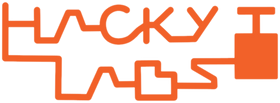Computer Engineering Books for Children - understanding the underlying psychology

Children are information magnets during their early developmental stages.
Their sponge-like brains are constantly absorbing new knowledge that teaches them about the world.
According to psychologist Jean Piaget, children go through four different stages of cognitive development as they grow up. The first phase is called the Sensorimotor stage, which occurs from the time an infant is born until they reach age 2.
It’s a time of exploration AND the realization that some things are real, OR they are not real, and IF interacted with in a certain way, something may happen. AND, OR, IF—sound familiar? Well these are the basics of computer engineering of course!
Here’s how we used child psychology to create Computer Engineering for Babies.
The Psychology Behind Computer Engineering Books for Children
During the first cognitive development stage, infants learn through their senses and motor abilities.
- Basic actions like sucking, grasping, looking, and listening are critical to shaping their cognition early on.
- Observing actions and behaviors, hearing language and other sounds, and interacting with physical objects are all key elements in helping infants gain knowledge.
It allows them to realize that they are separate from the people and objects around them, and that their actions influence the outer world.
The Psychological stages to a Computer Engineering Books
Photo: VeryWell
Reflexes (0-1 month) & Primary Circular reactions (1-4 months)
- From 0-1 months old, infants develop natural reflexes.
- At 1-4 months old, they start to discover pleasurable activities, such as kicking their legs, sucking their thumbs, etc. These actions are separate from natural reflexes because they are done with intention.
Secondary Circular Reactions/Reaction Coordination (4-12 months)
- At 4-8 months, infants start to repeat pleasurable actions that involve objects. A common example is consistently shaking a rattle because they like the way it sounds.
- From 8-12 months, the child is starting to show clear intention with their actions. They can build upon their previous knowledge to complete a goal, such as moving obstacles out of the way to grab their favorite toy.
Tertiary Circular Reactions (12-18 months)
- From 12-18 months, they can further pursue these goals by making realizations through trial and error, therefore adapting to their environment.
Creating a Computer Engineering Book with child psychology
Now, let’s take a practical look at this development when it involves Computer Engineering for Babies.
- From 0-1 months, your infant may notice that the book lights up, they may find it interesting but think nothing of it.
- A few months in, they may acknowledge that the book is an object.
- A few months later, it’s an object with a button and a light—something they can interact with.
- A little later, they start playing with the book more intently. They watch the light flicker on and off, but maybe don’t understand that it’s their doing quite yet.
- By the time they’re almost a year old however, they show interest in this object and realize through trial and error that the buttons they press determine the status of the light.
Fortunately, computers are not rocket science (simply a part of rocket science ;) ), so we were able to create a computer engineering book so easy an adult can understand it.
Computer engineering books so easy an adult can understand
While your baby may not necessarily know what the book is or why it does certain things, having it present at their early cognitive stages can teach them valuable lessons.
It can be used as a tool when they start understanding that first, the book is an object, and second, it’s an object that responds to an action. Interacting with this book from a very early age can help with their most basic psychological development.
And as an added bonus for you parents out there, you can go through the book with your baby and learn the basics of computer engineering yourself.
That way you’ll be able to act like you knew what AND, OR, and XOR statements were all along. You and your baby will both be geniuses—it's a win-win ;)
Grab your copy of Computer Engineering for Babies today!




